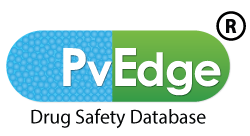Periodic safety reports are prepared as a part of periodic adverse experience submission. It is an unceasing cycle till the product’s lifespan in market is anticipated. With emergence of changing risk-benefit ratio, the reporting period may change if regulatory needs more information for monitoring a pharmaceutical product.
Considering the United States requirements for periodic reports, there are four sections in accordance to which the format should be reported. The emphasis is placed to prepare checklist (Appendix B: Report checklist1) and ensure that all the data requested in those sections is available for final periodic report.
During the expected period, there may be a long list of cases (e.g., non-serious, listed cases, non-serious and unlisted and others) that should be reported within the stipulated time period (usually quarterly/annual cycle)
Several types of adverse experience listings are required for periodic reports:
- 15-day reports submitted during the reporting period
- Non-15 day report for spontaneously reported domestic cases (when adverse experience is serious and expected, non-serious and unexpected, or non-serious and expected)
- Reports for drug or biological product listed as one of the suspect products, but the report was filed to another NDA, ANDA, or BLA held by the applicant
- Follow up information to adverse experiences submitted earlier as a periodic report can be submitted in the next cycle of periodic report
- Listing of death and overdose cases, listing of lack of efficacy cases (any failure of expected pharmacological action that is synonymous with lack of effect) with requisite case(s) information are submitted as per the guidance
- Different MedDRA terminologies are considered for types of listings as mentioned above
All these listings can be provided with click of a button, if you have a regulatory-friendly system that provides the desirable output in a template for periodic adverse experience submissions.
Considering the vast database of ample cases in pharmacovigilance (as submissions for different regions are carried out), it would indeed be a colossal task to pool out regional data (in this case, precisely US cases/reports for PADER/PAER submission) if no valid mechanism exists for mining listings with necessitated fields like manufacturer report no., adverse experience term(s) and the date of FDA submission of the 15-day report etc.1
PADER listings submitted in Sarjen’s PvNET database provide all the regulatory listings with audit trail activity. The medical writer can conveniently spend more time on precisely writing the narratives and analysis of the information based on the listings output of database across the US-product range. This undoubtedly improves productivity and efficiency along with regulatory adherence.
Reference:
1.http://www.fda.gov/BiologicsBloodVaccines/GuidanceComplianceRegulatoryInformation/Guidances/Vaccines/ucm074850.htm



